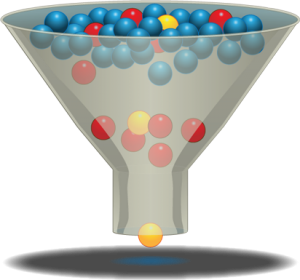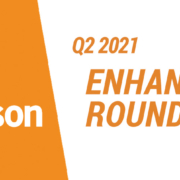Why Marketing Automation is Revenue Generating Software
 Marketing automation is designed to generate revenue. It has its hands strategically placed in all aspects of the buying process. It covers everything from initial sales prospecting to final lead conversion, and it includes valuable metrics for evaluating the results.
Marketing automation is designed to generate revenue. It has its hands strategically placed in all aspects of the buying process. It covers everything from initial sales prospecting to final lead conversion, and it includes valuable metrics for evaluating the results.
Nine ways Marketing Automation Software Generates Revenue:
1. Sales Prospecting
Marketing automation begins with sales prospecting. The software is designed to expand your contact database by capturing a broad-range of potential online consumers. Depending on the marketing automation provider, it can also increase the numbers of leads by allowing marketers to upload their contact database and earn trading credits based on the quality of the leads they provided. Businesses can then take the credits they received and exchange them for new contacts.
More Leads = More Revenue
2. Database Segmentation
It is too hard to customize campaigns based on each individual lead, but there still needs to be some personalization based on leads’ basic needs. By dividing leads into segments with similar interests, marketers can send more relevant messages to segmented groups which will increase response rates and generate more revenue.
3. Lead Tracking
Marketing automation is revenue generating software because it can track every visitor’s online activity. This tracking software is used to expand on a lead’s current profile data and assess their interest in certain products or services. Marketing automation tracks both a lead’s activity and their inactivity, so marketers can capture the lead’s entire buying process.
4. Lead Generation
Marketing automation brings new leads into the marketing engine using web forms, landing pages, email campaigns, and website tracking. It is able to generate more revenue by capturing new leads from the 95% of your website traffic that currently goes by unnoticed.
5. Lead Routing
Marketing automation software improves efficiency by instantly distributing qualified leads to the sales team. Striking while the iron is hot can sometimes be the difference between converting a customer and permanently losing them to a competitor. Most marketing automation providers can send leads automatically through Salesforce.com, text messages on cell phones, or by email depending on the company’s preference.
6. Lead Nurturing
Lead nurturing is one of the most effective ways to convert customers and generate more revenue. If the material is well-written, informative, and relevant to a potential consumer’s needs, it can be a valuable sales tool. Marketing automation software can be setup to instantly send lead nurturing content based on parameters established by database segmentation.
7. Inbound Marketing
A good marketing automation strategy should be focused on increasing a company’s exposure and creating methods for prospective leads to easily locate their website. By establishing credibility on other reputable websites, marketing automation can build their brand authority and bring in new customers.
8. Lead Conversion
Every step of marketing automation is gently guiding the lead towards conversion. Once a lead is showing sincere signs of interest, it can be passed onto to sales to close the deal. Marketing automation generates more revenue by producing up to 50% more sales-ready leads.
9. Metrics
Marketing automation software includes metrics for analyzing and evaluating each campaign. It is hard to judge whether or not a campaign was successful, unless you can physically see the results. This is the final and most important step to using marketing automation to generate revenue. Constant review and improvement will be necessary to ensure that it is capturing, nurturing, and converting every lead within the loop.



